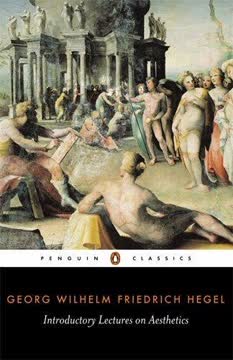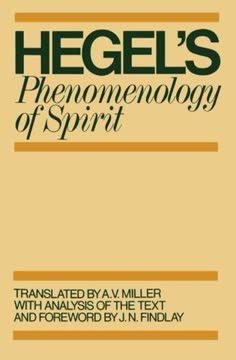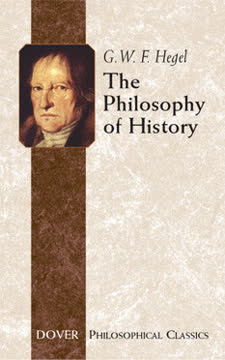Key Takeaways
1. Aesthetics is the Philosophy of Fine Art, not Natural Beauty.
The proper expression, however, for our science is the ‘Philosophy of Art’, or, more definitely, the ‘Philosophy of Fine Art’.
Defining the scope. Aesthetics, in its original sense, meant the "science of sensation or feeling," a term too broad and superficial for the profound study of beauty. While we commonly speak of natural beauty—a beautiful sky, a beautiful flower—the true subject of philosophical inquiry is the beauty found in art. This distinction is not arbitrary but fundamental to understanding art's unique value.
Art's inherent superiority. Artistic beauty stands higher than natural beauty because it is "born—born again, that is—of the mind." The human mind, with its capacity for truth, freedom, and self-consciousness, elevates its creations above mere natural phenomena. Even a fleeting human thought, in its intellectual being and freedom, surpasses any natural product, which remains indifferent and un-self-conscious.
Focus on the mind. Natural beauty, while acknowledged, is too vague and lacks a clear criterion for scientific treatment. No one has systematically developed a science of natural beauty. Art, by contrast, is a deliberate product of human spirit, embodying profound intuitions and ideas. Therefore, the "Philosophy of Fine Art" is the precise and appropriate term for this science, reflecting its focus on the mind's highest expressions.
2. Art Transcends Nature as a Higher Expression of Mind.
For the beauty of art is the beauty that is born – born again, that is – of the mind; and by as much as the mind and its products are higher than nature and its appearances, by so much the beauty of art is higher than the beauty of nature.
Mind's creative power. Art is a product of human activity, a creation of the mind, which inherently ranks above the products of nature. While a natural object like a flower possesses life and movement, a work of art, though outwardly inanimate, is imbued with spiritual value. It has passed through the mind, receiving the "baptism of the spiritual," and represents what has been molded in harmony with thought and feeling.
Spiritualizing the sensuous. A landscape depicted by an artist, for instance, assumes a higher rank than the mere natural landscape because it manifests human feeling and insight. This spiritual dimension allows art to represent divine ideals in a way that nature cannot. Furthermore, art confers permanence upon the spiritual content it borrows from inner life, unlike the transient and mutable individual living things of nature.
Divine activity in man. The common misconception that natural products are solely God's work, while art is merely human, must be abandoned. God is Spirit, and it is through man, as conscious spirit, that the divine element operates in a form appropriate to its essence. In art, the divine element, generated from the mind, achieves an adequate and self-conscious existence, surpassing its unconscious, sensuous appearance in nature.
3. Art's Purpose is to Reveal Truth, Not to Amuse or Deceive.
Art invites us to consideration of it by means of thought, not to the end of stimulating art production, but in order to ascertain scientifically what art is.
Beyond mere amusement. While art can serve as a pleasing pastime or adornment, its highest calling is not to be a mere luxury or a means to other ends like morality or piety. Such views reduce art to a "servile" role, contradicting its true nature. Art achieves its highest task when it stands alongside religion and philosophy as a mode of revealing the Divine Nature and the deepest truths of the mind.
Appearance as truth. The criticism that art consists in "appearance and deception" is misplaced. Appearance is essential to existence; truth must appear and reveal itself. The "appearances of art," far from being mere semblances, possess a "higher reality" than the fleeting, accidental realities of common life. Art liberates the true import of phenomena from the "deception of this bad and fleeting world," presenting eternal powers more purely than history or immediate sensuous experience.
Art as an end in itself. Art's purpose is not to instruct or morally improve in an abstract, didactic way, which would make it a mere means to an external end. Instead, art has the vocation of "revealing the truth in the form of sensuous artistic shape," representing a "reconciled antithesis" of abstract mind and actual nature. Its purpose is inherent in this representation and revelation, making it an end in itself.
4. The Artist's Genius Requires Cultivation, Not Just Inspiration.
We need only lay down as essential the view that, though the artist’s talent and genius contains a natural element, yet it is essentially in need of cultivation by thought, and of reflection on the mode in which it produces, as well as of practice and skill in producing.
Beyond mechanical rules. Artistic production is not a mechanical process that can be taught or replicated through mere rules. While rules may guide external circumstances, true art demands a spiritual activity that draws on its own resources, bringing forth a richer content and ampler individual creations than abstract formulae can dictate.
Genius and cultivation. The notion that art is solely the product of "talent and genius," operating instinctively without conscious thought or reflection, is partly right but also flawed. While talent and genius are specific, natural gifts, they are "essentially in need of cultivation by thought." The highest artists must profoundly represent the depths of heart and mind, which are only fathomed through study, experience, and reflection on both the inner and outer world.
Practice and maturity. Artistic production involves a technical side, especially in architecture and sculpture, which requires skill gained through "reflection, industry, and practice," not just inspiration. Moreover, profound and substantial works, particularly in poetry, demand a richly educated mind and heart, often achieved only in mature age. Early works, even of great poets like Goethe and Schiller, can be immature or even crude, demonstrating that inspiration alone is insufficient for lasting artistic achievement.
5. Art's True End: Self-Revelation of the Reconciled Idea.
Against this it is necessary to maintain that art has the vocation of revealing the truth in the form of sensuous artistic shape, of representing the reconciled antithesis just described, and, therefore, has its purpose in itself, in this representation and revelation.
Beyond external utility. The true end of art is not to serve as a means for moral improvement, instruction, or any other external purpose. Such views degrade art to a mere instrument, implying its value lies outside its own sphere. Art's inherent dignity demands that its purpose be internal, residing in its unique capacity to manifest truth.
Reconciling antitheses. Art's profound mission is to represent the "reconciled antithesis" between the abstract, self-concentrated mind and actual nature, encompassing both external phenomena and inner subjective feelings. This reconciliation is not a mere postulate but an accomplished and self-accomplishing reality, which philosophy helps us to understand reflectively. Art, through its sensuous forms, makes this unity perceptible.
The Ideal embodied. The "Idea" in art is not an abstract concept but the Idea developed into a concrete form, entering into immediate and adequate unity with reality. This perfect conformity of the Idea and its plastic mold is the "Ideal." True artistic beauty arises when the inner truth of the content is profound, and its outward shape is essentially and actually the true shape, because the content itself is true and real.
6. Art's Supreme Destiny is a Thing of the Past, Now Subject to Thought.
However all this may be, it certainly is the case that art no longer affords that satisfaction of spiritual wants which earlier epochs and peoples have sought therein, and have found therein only; a satisfaction which, at all events on the religious side, was most intimately and profoundly connected with art.
A shift in spiritual needs. Art, in its highest destiny, is "a thing of the past." The "beautiful days of Greek art, and the golden time of the later middle ages are gone by." In those epochs, art was intimately connected with religious interests and provided a unique satisfaction of spiritual needs. However, modern reflective culture has moved beyond this stage.
The rise of abstract thought. Our contemporary life, governed by general points of view, laws, duties, and maxims, is not favorable to art. The universal is now present as abstract law, not as a living creation unified with mood and feeling. This pervasive reflection infects artists, leading them to infuse more abstract thought into their works, and making it impossible for them to escape this intellectualized world.
Art as an object of study. Art no longer holds its former necessity or place in reality; it is "transferred into our ideas" and becomes an object of judgment and intellectual consideration. Consequently, the "science of art" is a more pressing need today than in times when art, simply as art, provided full satisfaction. We study art not to stimulate production, but "in order to ascertain scientifically what art is."
7. Romantic Irony Undermines Art's Earnestness and Substance.
This amounts to making all that is actual in its own right a mere semblance, not true and real for its own sake and by its own means, but a mere appearance due to the I, within whose power and caprice it remains, and at its free disposal.
The absolute I. Rooted in Fichte's philosophy, Romantic Irony posits the "I" as the absolute principle, negating all external content and recognizing value only by its own favor. This leads to the belief that everything actual is a "mere semblance," subject to the individual's power and caprice, to be created or annihilated at will.
Art as subjective play. When applied to art, this means the artist treats all content as mere semblance, lacking genuine earnestness about its utterance or realization. True earnestness arises from a substantial interest in truth or morality, which the ironist denies. This "God-like geniality" looks down on others who find fixed validity in law or morality, seeing them as "borné and dull."
Consequences for art. This ironical attitude results in "insipid figures" and "shapes void of import and of conduct," as their substantive nature is reduced to nullity. Such art, characterized by "characterless" individuals and "unresolved contradictions of the heart," fails to awaken genuine interest. Hegel criticizes this as "supremely inartistic," leading to "sickly yearning" and a lack of profound feeling, rather than true artistic insight.
8. Art Forms Evolve with the Idea: Symbolic, Classical, Romantic.
Thus the higher truth is spiritual being that has attained a shape adequate to the conception of spirit. This is what furnishes the principle of division for the science of art.
Idea-shape relations. The evolution of art is driven by the Idea itself, specifically by how the Idea (as artistic content) relates to its sensuous shape. This relationship determines the "types of art," which are the fundamental divisions of artistic beauty. These types represent the aspiration after, attainment of, and transcendence of the Ideal.
Three main forms:
- Symbolic Art: The Idea is indistinct or abstract, struggling to find adequate expression. Its shape is often bizarre or defective, with natural objects invested with abstract significance (e.g., a lion symbolizing strength). This form is characterized by aspiration, disquiet, mystery, and sublimity, where the Idea transcends its inadequate sensuous manifestation.
- Classical Art: Achieves a perfect, free, and adequate embodiment of the Idea in a shape peculiarly appropriate to it. The content is concrete spiritual, finding its ideal expression in the human form, purified from contingent finiteness. Here, mind is specified as human mind, fully revealed to sense without projecting beyond its bodily scope.
- Romantic Art: Destroys the completed union of classical art because the Idea, now conceived as "absolute inwardness" (like the Christian God as Spirit), transcends sensuous representation. The inner world triumphs over the outer, and the sensuous appearance becomes secondary, often contingent or grotesque, as it cannot fully express the profound spiritual content.
A necessary progression. These art forms represent a necessary progression in spirit's self-consciousness. Each stage reflects a different mode of grasping the absolute, with corresponding changes in how content and form are unified. This evolution provides the framework for understanding the history and nature of art.
9. Individual Arts Manifest the Idea Through Specific Sensuous Media.
The arts, then, of which form and content exalt themselves to ideality, abandon the character of symbolic architecture and the classical ideal of sculpture, and therefore borrow their type from the romantic form of art, whose mode of plasticity they are most adequately adapted to express.
Realization in media. The general art forms—symbolic, classical, and romantic—find their concrete realization in specific sensuous media, giving rise to the individual arts. Each art is uniquely suited to express a particular art form, though it may also, in a subordinate way, represent aspects of other forms.
The hierarchy of arts:
- Architecture: The first art, embodying the symbolic form. It manipulates inorganic matter (heavy mass, mechanical laws) to create an external artistic world, like a temple, which points to a spiritual content beyond itself.
- Sculpture: The objective art, realizing the classical form. It imbues the human figure with spiritual inwardness, achieving a perfect unity of sensuous shape and spiritual content in three spatial dimensions, representing eternal repose.
- Painting, Music, Poetry: The subjective arts, expressing the romantic form.
- Painting: Uses visibility as color on a plane surface, allowing for comprehensive specification of content, from the highest mind to particular natural scenes.
- Music: Employs sound, a temporal ideality, to express indefinite inward spiritual nature, feelings, and passions, forming the center of romantic arts.
- Poetry: The most spiritual art, using the word as a sign for concrete ideas. It transcends sensuousness, operating in the inner space of imagination and thought, and ultimately passes into the "prose of thought," marking art's self-transcendence.
Art's grand Pantheon. This articulated totality of arts—from architecture to poetry—constitutes the "wide Pantheon of art." It is through this external realization of the Idea that the spirit of beauty awakens to self-knowledge, a process that requires the "evolution of ages" in world history.
Last updated:
Review Summary
Introductory Lectures on Aesthetics by Hegel explores the nature of art, beauty, and their relationship to philosophy and religion. Readers find it challenging yet rewarding, praising Hegel's systematic approach to aesthetics. Some appreciate his insights on art's role in society and human consciousness, while others criticize his Eurocentrism and contradictions. The book is seen as a valuable introduction to Hegel's philosophy, though its dense language and complex ideas require careful study. Overall, it's considered an influential work in the field of aesthetics.
Download PDF
Download EPUB
.epub digital book format is ideal for reading ebooks on phones, tablets, and e-readers.







